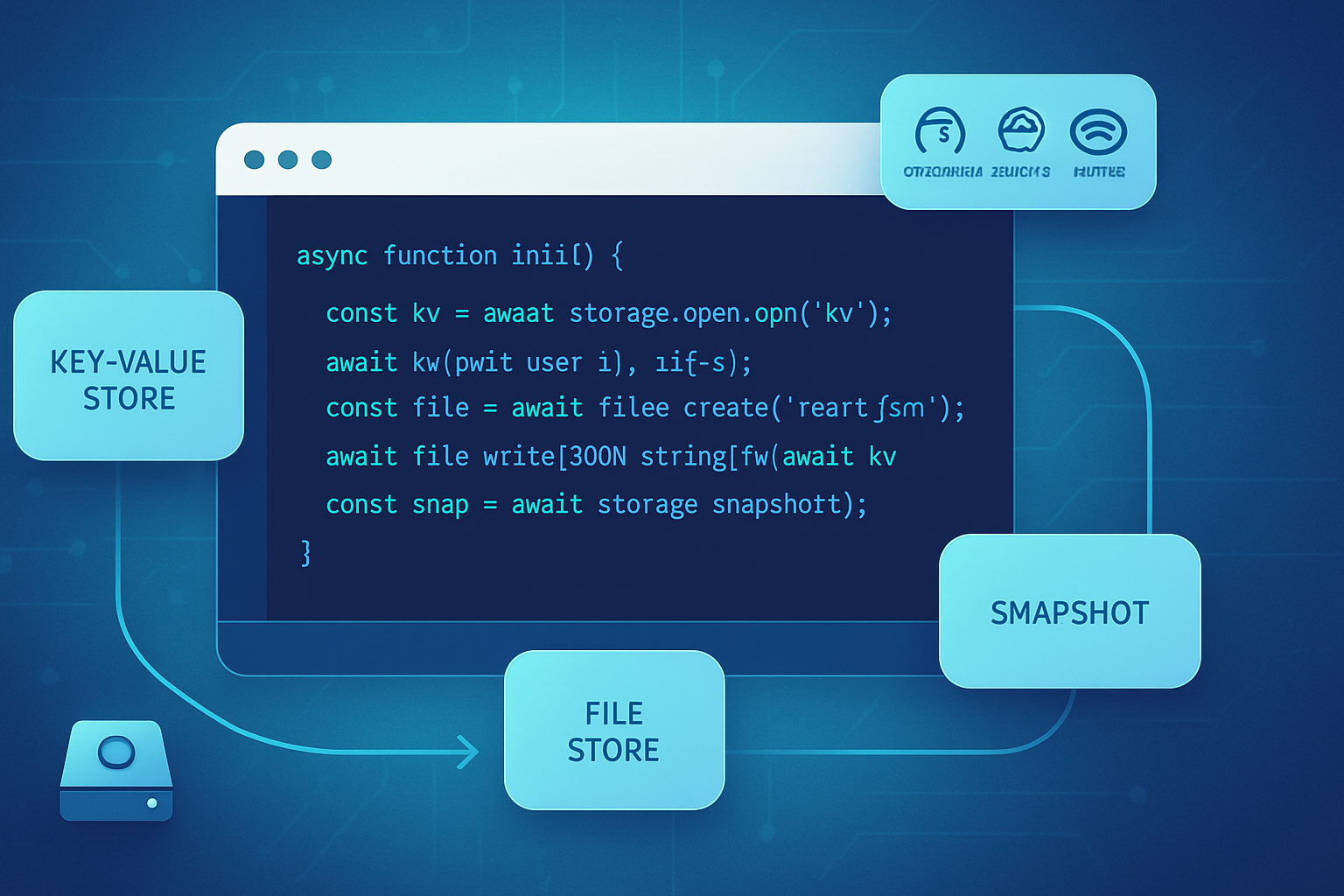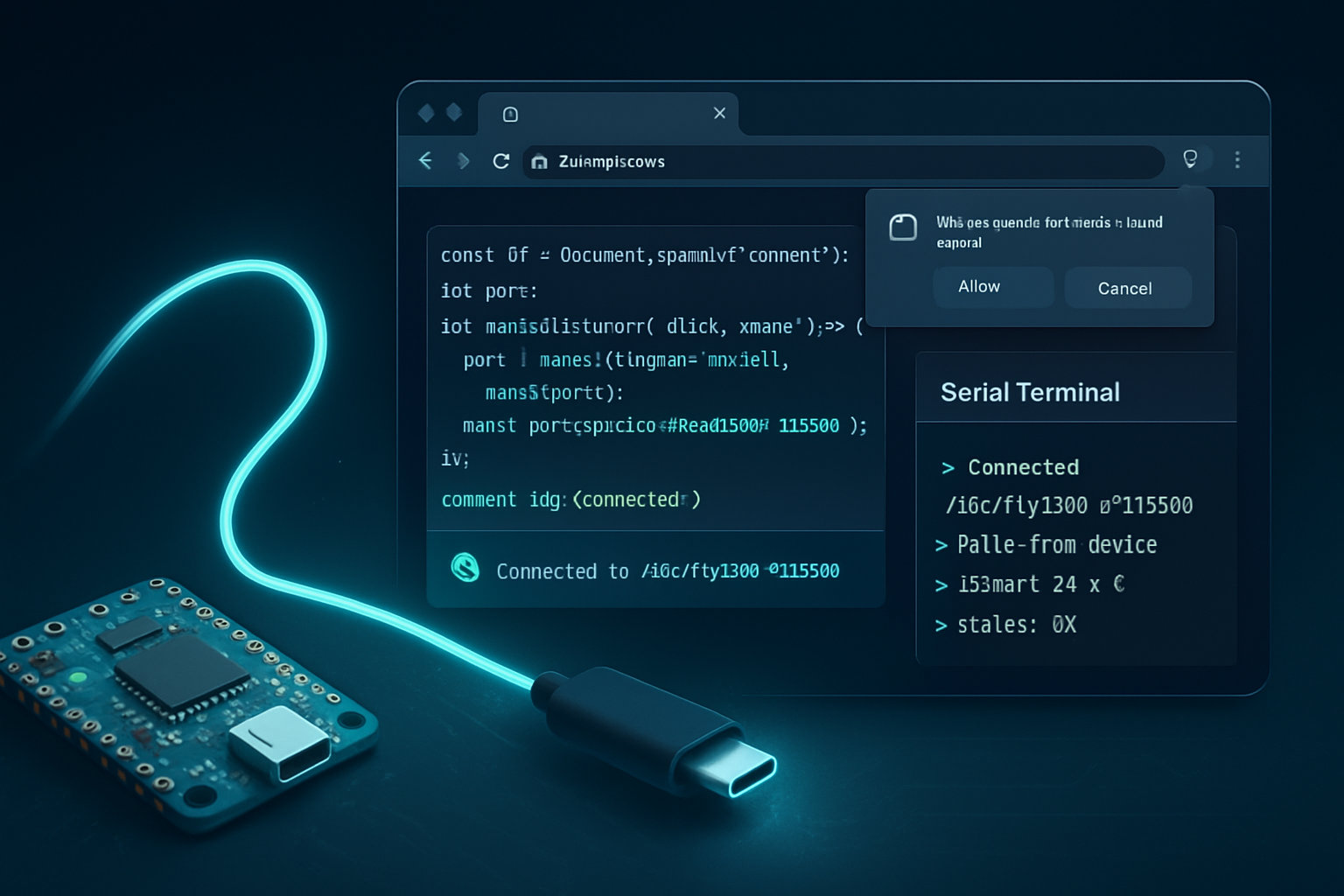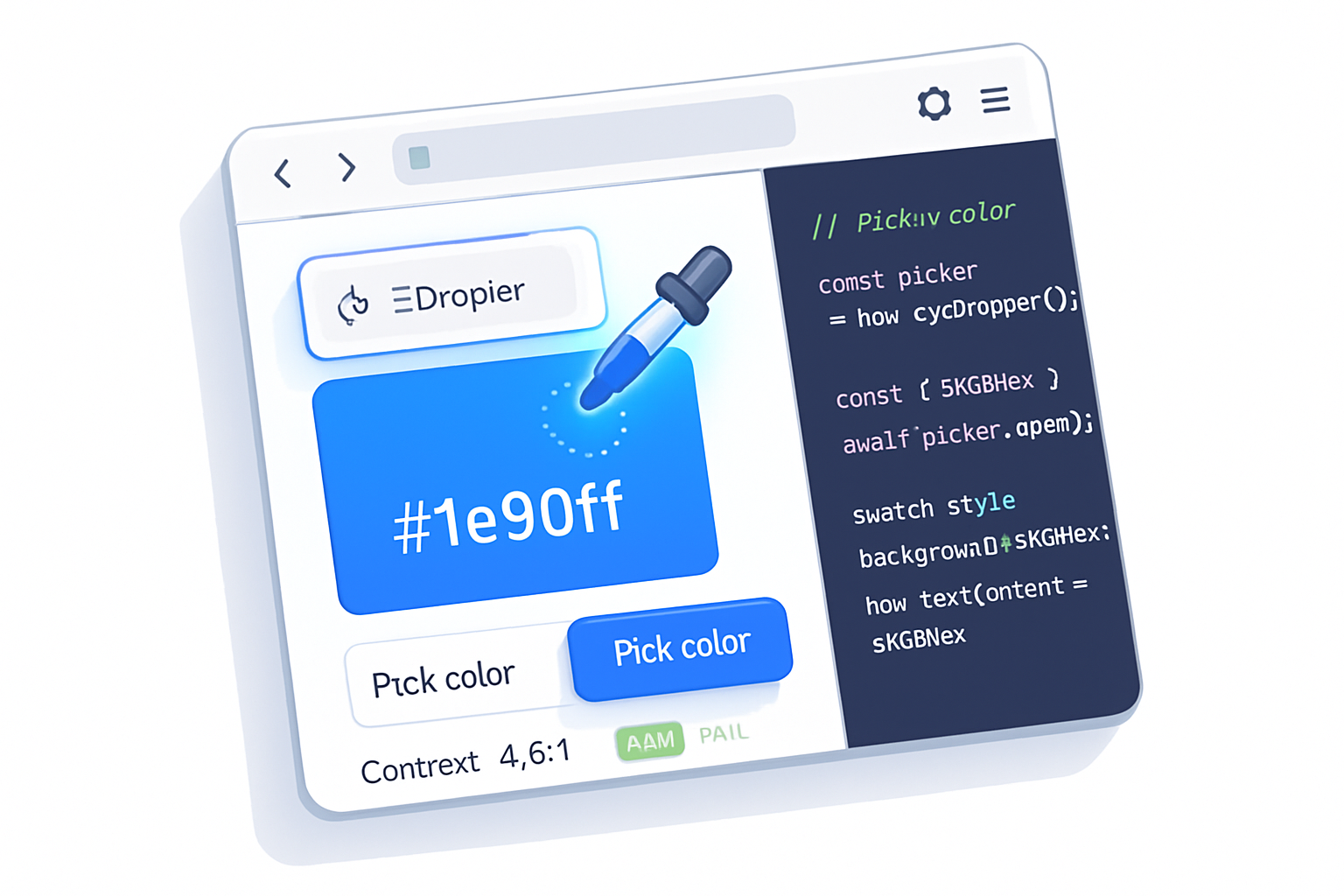· deepdives · 7 min read
Mastering the Gamepad API: From Basics to Advanced Features
A practical, example-driven guide to the Gamepad API - learn how to detect controllers, poll inputs efficiently, support multiple players, implement haptic feedback, and build a robust GamepadManager for production-ready games.

What you’ll achieve
By the end of this article you will be able to: detect and read controllers in the browser, build a robust poll loop for continuous input, handle button-edge detection and axis deadzones, implement vibration (haptics), and support multiple controllers with player assignment. You’ll also get a reusable GamepadManager class to drop into your projects.
Short preview: smoother controls. Better feedback. Multiple players working at once.
Quick overview: How the Gamepad API works (the essentials)
The Gamepad API exposes connected controllers through navigator.getGamepads() and events like gamepadconnected and gamepaddisconnected.
navigator.getGamepads()returns an array-like list of Gamepad objects.- Each Gamepad contains
id,index,buttons,axes, and optionalvibrationActuator. - Browsers differ in mapping and haptics support. Always feature-detect.
Useful references:
- MDN Gamepad API - https://developer.mozilla.org/en-US/docs/Web/API/Gamepad_API
- W3C Gamepad specification - https://www.w3.org/TR/gamepad/
- Compatibility checks - https://caniuse.com/gamepad
Minimal example: detect and read a controller
This tiny snippet is the fastest way to get inputs flowing. It uses a poll loop with requestAnimationFrame:
window.addEventListener('gamepadconnected', e => {
console.log(
'Gamepad connected at index %d: %s',
e.gamepad.index,
e.gamepad.id
);
});
function poll() {
const gamepads = navigator.getGamepads();
const gp = gamepads[0]; // first connected gamepad
if (gp) {
// read first button and first axis
const aPressed = gp.buttons[0].pressed;
const xAxis = gp.axes[0];
// use inputs
}
requestAnimationFrame(poll);
}
poll();Notes: polling is preferred for responsive games because it gives you a steady update rhythm and avoids stale states.
Button edge detection and debouncing
Games usually need to know when a button was pressed (edge) vs is held. Implement by tracking previous button states.
function updateGamepadState(gp, prev) {
gp.buttons.forEach((btn, i) => {
const wasPressed = prev[i] && prev[i].pressed;
const isPressed = btn.pressed;
if (!wasPressed && isPressed) {
// button down (edge)
onButtonDown(i);
}
if (wasPressed && !isPressed) {
// button up
onButtonUp(i);
}
});
}This also makes it easy to implement simple debouncing, combos, and tap vs hold detection.
Handling axes: deadzone and normalization
Analog sticks are noisy. Use a deadzone and optionally re-map magnitudes.
function applyDeadzone(value, deadzone = 0.12) {
if (Math.abs(value) < deadzone) return 0;
// Re-scale to remove the dead zone gap
return (value - Math.sign(value) * deadzone) / (1 - deadzone);
}
// usage
const x = applyDeadzone(gp.axes[0]);
const y = applyDeadzone(gp.axes[1]);Tune deadzone to taste. For precision movement, apply a non-linear curve (e.g., square or cubic) for finer low-range control.
Vibration (Haptics)
Not all browsers or controllers support haptics. Feature-detect before calling. Modern Chrome supports a vibrationActuator with playEffect (dual-rumble).
async function rumble(gamepad, strong = 0.5, weak = 0.5, duration = 200) {
if (!gamepad || !gamepad.vibrationActuator) return;
try {
await gamepad.vibrationActuator.playEffect('dual-rumble', {
startDelay: 0,
duration: duration, // ms
weakMagnitude: weak, // 0.0 - 1.0
strongMagnitude: strong,
});
} catch (err) {
console.warn('Rumble failed', err);
}
}Practical tips:
- Use short bursts for feedback on events (hit, explosion). Long vibrations drain battery.
- Check
navigator.userActivationpolicies; some browsers disallow haptics without user gesture. - Wrap haptics in try/catch because devices or browsers may reject unsupported effects.
Reference: MDN on haptics - https://developer.mozilla.org/en-US/docs/Web/API/GamepadHapticActuator
Multi-controller support and player assignment
Games commonly support multiple controllers. Keep an internal registry keyed by gamepad.index (but be aware index may change across reconnections). Better to track by id and fallback to index.
High-level approach:
- Listen for
gamepadconnectedand add to a controllers map. - Allow explicit player assignment in your UI (“Press a button to join”).
- Keep previous-state snapshots for each connected controller.
- Poll all connected controllers each frame.
Example join flow:
const controllers = new Map();
window.addEventListener('gamepadconnected', e => {
controllers.set(e.gamepad.index, {
gamepad: e.gamepad,
prevButtons: e.gamepad.buttons.map(b => ({ pressed: b.pressed })),
});
});
window.addEventListener('gamepaddisconnected', e => {
controllers.delete(e.gamepad.index);
});
function pollAll() {
const gps = navigator.getGamepads();
controllers.forEach((entry, index) => {
const gp = gps[index];
if (!gp) return; // disconnected mid-frame
updateGamepadState(gp, entry.prevButtons);
// update prevButtons
entry.prevButtons = gp.buttons.map(b => ({ pressed: b.pressed }));
});
requestAnimationFrame(pollAll);
}
pollAll();Player assignment tip: let the player press any button to join; store a mapping of player -> gamepad.index.
Building a robust GamepadManager (drop-in class)
Below is a production-ready skeleton you can expand. It handles connect/disconnect, polling, edge detection, deadzones, haptics, and simple player joins.
class GamepadManager {
constructor({ deadzone = 0.12 } = {}) {
this.deadzone = deadzone;
this.controllers = new Map(); // key: index => {gp, prevButtons}
this.playerMap = new Map(); // playerId => index
this._raf = null;
this._onConnect = this._onConnect.bind(this);
this._onDisconnect = this._onDisconnect.bind(this);
}
start() {
window.addEventListener('gamepadconnected', this._onConnect);
window.addEventListener('gamepaddisconnected', this._onDisconnect);
if (!this._raf) this._tick();
}
stop() {
window.removeEventListener('gamepadconnected', this._onConnect);
window.removeEventListener('gamepaddisconnected', this._onDisconnect);
if (this._raf) cancelAnimationFrame(this._raf);
this._raf = null;
}
_onConnect(e) {
this.controllers.set(e.gamepad.index, {
gp: e.gamepad,
prevButtons: e.gamepad.buttons.map(b => ({ pressed: b.pressed })),
});
console.info('Controller connected:', e.gamepad.id);
}
_onDisconnect(e) {
this.controllers.delete(e.gamepad.index);
// remove any player mapping
for (const [player, idx] of this.playerMap.entries()) {
if (idx === e.gamepad.index) this.playerMap.delete(player);
}
console.info('Controller disconnected:', e.gamepad.id);
}
_tick() {
const gps = navigator.getGamepads();
for (const [index, entry] of this.controllers.entries()) {
const gp = gps[index];
if (!gp) continue;
// process axes
const ax = gp.axes.map(v => this._applyDeadzone(v));
// process buttons with edge detection
gp.buttons.forEach((btn, i) => {
const prev = entry.prevButtons[i] && entry.prevButtons[i].pressed;
if (!prev && btn.pressed)
this._emit('buttondown', { index, button: i });
if (prev && !btn.pressed) this._emit('buttonup', { index, button: i });
});
entry.prevButtons = gp.buttons.map(b => ({ pressed: b.pressed }));
// emit axis and state updates
this._emit('state', { index, axes: ax, buttons: gp.buttons });
}
this._raf = requestAnimationFrame(() => this._tick());
}
_applyDeadzone(v) {
const d = this.deadzone;
if (Math.abs(v) < d) return 0;
return (v - Math.sign(v) * d) / (1 - d);
}
// Simple event system
on(event, fn) {
this._events = this._events || {};
(this._events[event] = this._events[event] || []).push(fn);
}
_emit(event, payload) {
((this._events && this._events[event]) || []).forEach(fn => fn(payload));
}
// convenience: trigger rumble on controller index
async rumble(index, strong = 1.0, weak = 1.0, duration = 200) {
const gp = navigator.getGamepads()[index];
if (!gp || !gp.vibrationActuator) return false;
try {
await gp.vibrationActuator.playEffect('dual-rumble', {
startDelay: 0,
duration,
weakMagnitude: weak,
strongMagnitude: strong,
});
return true;
} catch (e) {
console.warn('Rumble error', e);
return false;
}
}
}
// Example usage:
const gm = new GamepadManager();
gm.on('state', s => {
// update game world or UI
});
gm.on('buttondown', b => {
console.log('buttondown', b);
});
gm.start();This class is a good starting point for integration into an engine or React/Vue UI.
Mapping differences and the ‘standard’ layout
Many controllers implement a standard mapping which maps physical buttons to a common layout (A/B/X/Y, bumpers, triggers, sticks). Check gamepad.mapping === 'standard' before assuming button indexes. When mapping is not standard, provide a remapping UI or let players calibrate by pressing the physical button that corresponds to an action.
UX and design considerations
- Show a small “controller connected” HUD to confirm which index/ID joined.
- Provide remapping and sensitivity sliders for axes.
- Offer a “Press any button to join” flow for local multiplayer.
- Persist custom bindings (localStorage) keyed by controller
idso users don’t rebind every time. - Use short, distinct haptic patterns for different events and avoid long, continuous vibrations.
Debugging tips
- Use
console.table(navigator.getGamepads())to inspect live inputs. - When a controller seems unresponsive, verify mapping and check browser permissions and focus: many browsers only expose gamepads to the page with user interaction or when the page is in focus.
- Reconnect the controller and watch for
gamepaddisconnected/gamepadconnectedevents.
Browser support and fallbacks
Gamepad API basics are widely supported, but haptic features vary. Always feature-detect before using advanced features.
- Check support: https://caniuse.com/gamepad
- When haptics are unavailable, fall back to on-screen or audio feedback.
Putting it together: practical example ideas
- Local multiplayer arena: allow 4 players to join via “Press any button to join” and use GamepadManager to route inputs.
- Racing game: remappable steering/accel with analog axis deadzone and rumble on collisions.
- Input-driven UI: navigate menus with the D-pad and show keyboard shortcuts for controllers.
Final checklist before release
- Feature-detect and fail gracefully for unsupported browsers
- Provide remapping and sensitivity options
- Keep polling efficient (requestAnimationFrame)
- Implement edge detection for reliable button events
- Respect battery life when using haptics
- Test on multiple controllers and platforms
Closing thought
The Gamepad API gives you direct access to a tactile world: analog nuance, buttons, and haptics. A robust polling loop plus good UX - remapping, deadzones, and short haptic cues - turns a stray controller into a delightful, responsive game experience. Put these building blocks together and your web game will feel like a native controller-first title.



